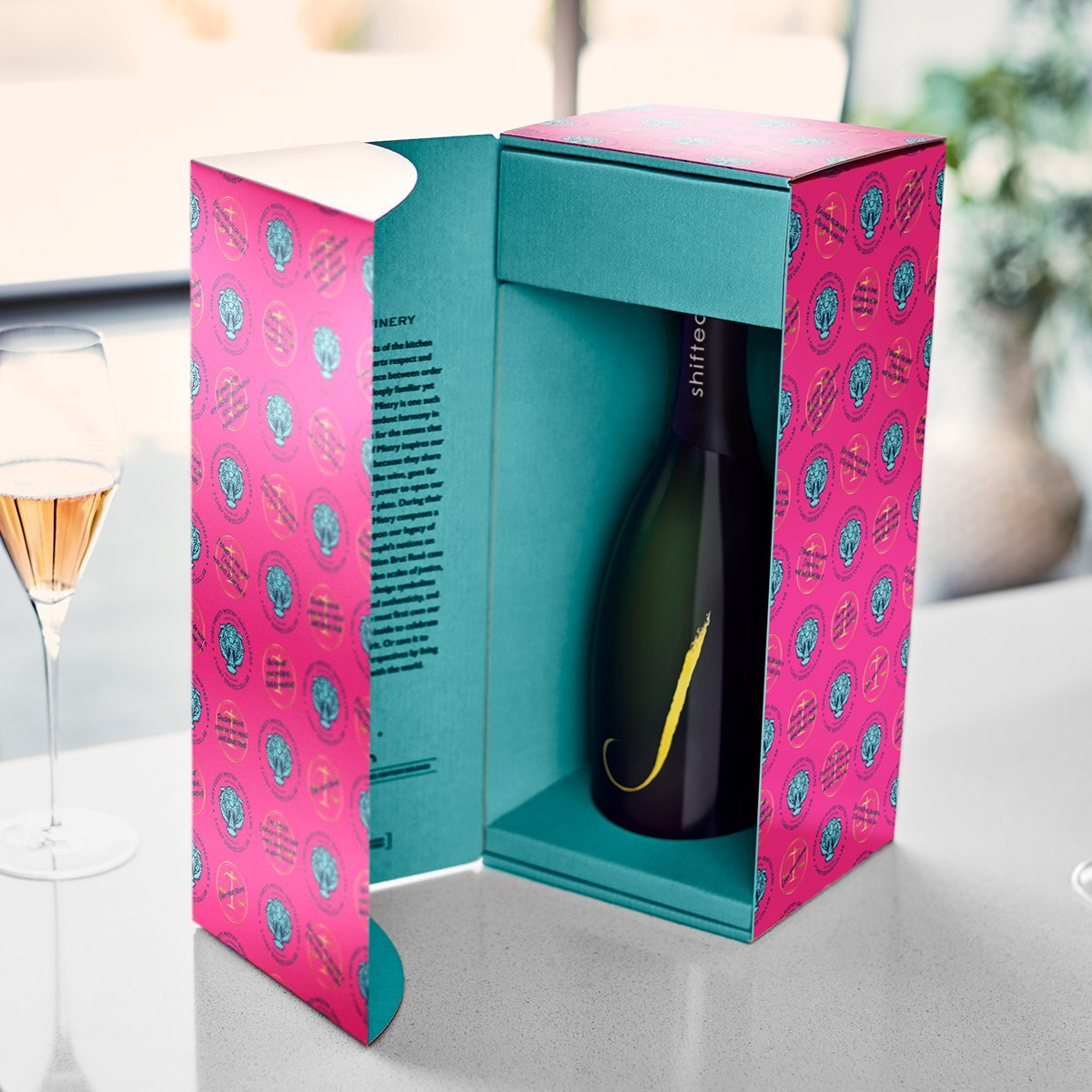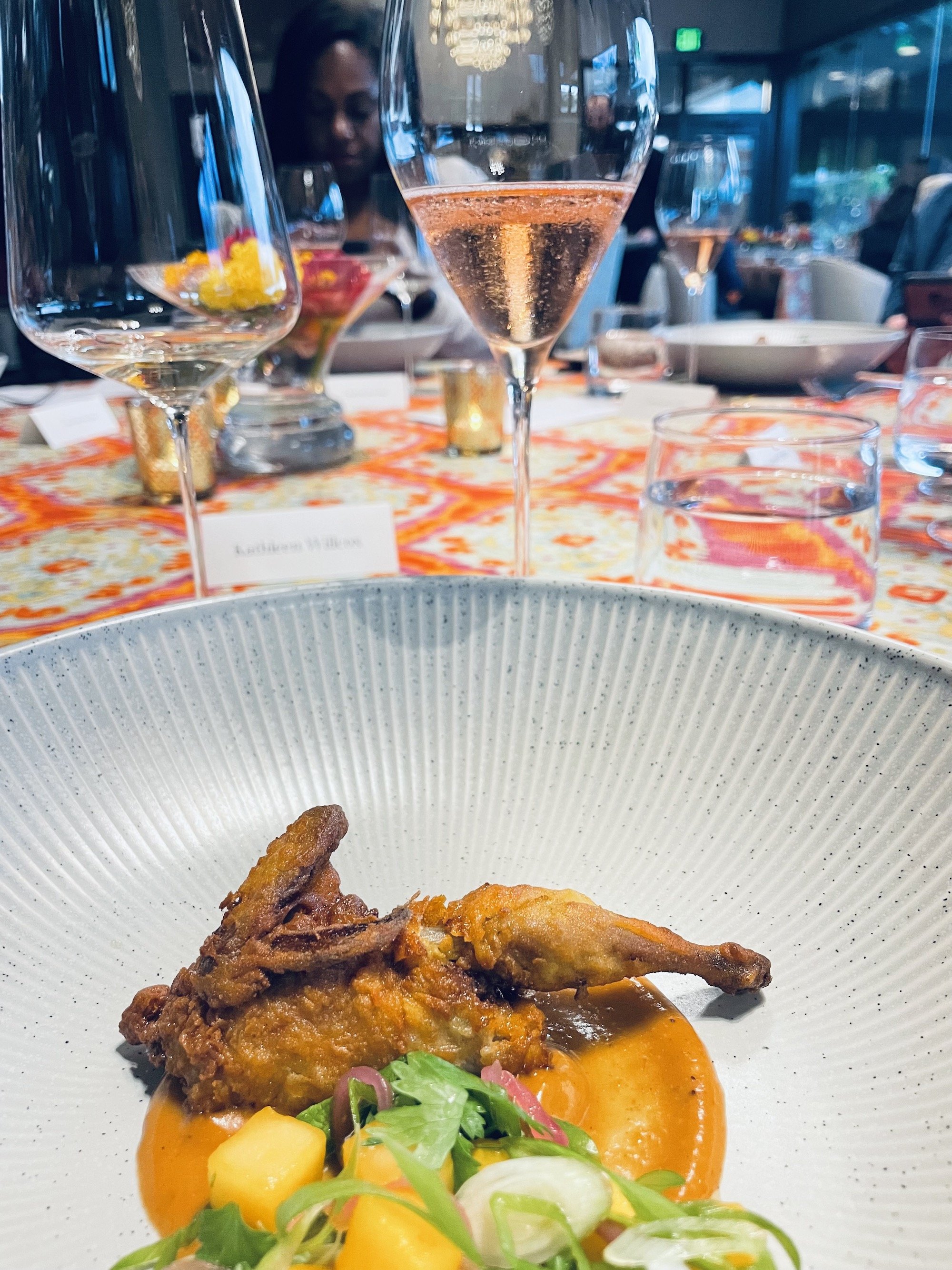How J Vineyards Is Changing the Way We Think About Wine Pairing & Inclusivity
Lens: a curved piece of glass or other transparent material, used to make object seem closer, larger or smaller. Also, the part of the eye behind the pupil that helps you to see clearly. Shifting the lens, then, could entail changing the person behind it, and the person or object in front of it. J Vineyards & Winery is doing both, at the same time. Founded in 1986 by Judy Jordan and located in Sonoma. A top award winner in the New York International Wine Competition, in 2022 J Vineyards won Double Gold for their 2019 Pinot Noir, Gold for their 2021 Pinot Gris, Silver for Cuvée and Bronze for Brut Rosé.
Shifting the Lens
“When we began what has evolved into Shifting the Lens, we knew we wanted to change the way people think about pairing food and wine and underline our mission of inclusivity and welcoming everyone to the table,” says J Vineyard’s winemaker Nicole Hitchcock. “We also wanted to make sure that anything we created reflected our core values of innovation, transforming traditional perceptions of wine and making a positive impact on the communities around us.”
A tall order to be sure, and a realization that came to the team at J Vineyards gradually over time in the past few years, through the upheaval of the pandemic and the Black Lives Matter movement, and stark realities about privilege and inequity that emerged in their wake and became impossible to ignore.
In a moment of providence amid the bleakness, Preeti Mistry, a James Beard-nominated chef whose nascent culinary projects were sidelined by the shut-downs, met Hitchcock and Lindsey Eddy-Cort, the senior director of consumer experience at E & J Gallo through their collaborations with Farm to Pantry, a nonprofit that works with more than 500 volunteer gleaners, 400 property owners and 100 community partners to rescue produce destined for landfills and deliver it to hungry people.
It quickly became clear that J Vineyard and parent company Gallo’s vast resources, Mistry’s distinct paradigm—and both of their powerful platforms—could not only change the way food and wine pairings are understood but perhaps even prompt deeper questions about equity and representation.
Change Begins with Deeper Conversations
“We saw an opportunity for a deeper conversation,” Mistry says. “We knew it had to be about more than just cooking good food. I wanted to not just push comfort levels, but shatter the hierarchy of cuisines.”
Indeed, even for most adventurous eaters, when it comes to pairing wine with food, the easy, automatic options involve either French or Italian cuisine.
The team at J Vineyards and Mistry created “Shifting the Lens,” a three-part culinary residency that invited Mistry, and two other unique voices in the culinary world to create rotating two-week five-course takeovers of the winery’s famed Healdsburg Bubble Room. The chefs also worked with Hitchcock on a limited-edition Brut Rosé, which would be served with one of the five courses during each takeover (and is available in limited quantities for purchase online).
Mistry and Chefs Jenny Dorsey and Shenarri Freeman all specialize in cuisines and cooking styles that aren’t, well, French or Italian.
Mistry pairs her Indian heritage with farm-fresh Sonoma County flavor, creating dishes that evoke the riotous joy, storied history and audacious beauty of Indian cuisine with Sonoma’s bounty and terroir. Dorsey, a Chinese-born American chef, uses food as a medium for identity, vulnerability and social change, creating delicious and decadent dishes like duck fat poached oysters with raw sambal that fuse cultures and flavors in unexpected ways. Freeman, meanwhile, is a plant-based chef known for soulful Southern cooking: think southern fried lasagna, palm cakes and smoked grits.
A Different Approach to Food & Wine Pairing
“To me, cooking is an act of love,” Mistry says. “We cook to nourish ourselves, our family, and our community. For me, cooking is also about sharing ourselves with others. In these divisive times, when we are often left not knowing what to do or where to step next, sharing food and creating community is always a positive step in our shared liberation. Celebrating and appreciating all of our differences brings us together in the common joy of a great meal.”
The collaborations, Hitchock explains, have “pushed” her own sense of what is possible in both food and wine.
“Through creating wine pairings for these menus, and working on the Brut Rosé together, a lot of preconceived notions were thrown out the window,” Hitchcock says, adding that their Rosé is actually “the driest of all of our cuvees, just 7.5 grams of residual sugar. We didn’t even plan to make a Rosé, but as we gathered to finalize it, they kept pushing me to go drier. We actually ended up using individual lots of Pinot Noir from our six estate vineyards in the dosage itself, so this wine feels like a true representation of the collaboration and J Vineyards’ terroir.”
At the debut of Mistry’s two-week takeover, attendees were able to experience that surprise and sense of dislocation for themselves. Note that Chef Dorsey’s debuted in July, and Chef Freeman’s VIP dinners will debut in October.
Most of the attendees at the dinner were industry or media people. In other words, people who get paid to taste wine and food for a living, and folks for whom flavor and texture are tools of the trade. To awe and to titillate their palates, fireworks have to be on order.
Thankfully, they were. I have been struggling to identify my favorite pairing of the evening, and I’ve come down to two.
The Burnt Masala Quail, with Tamarind and Pickled Melon Relish with the Russian River Valley J Vineyards Shifted Lens Brut Rosé, for the masterful cooking and presentation techniques and the audacity of pairing the layered, intense but complex spices and sweet, tart, bright acid of the meal with a Brut Rosé. Before that pairing, a sweet Riesling would have been my obvious choice, but the texture of the bubbles and the bright strawberries and deep minerality of the wine enhanced the refined fire.
But also the Eggplant Biryani, Okra, Turmeric Rice and Cucumber Raita with Russian River Valley J Vineyards 2019 Foggy Bend Pinot Noir, because eggplant is usually my least favorite vegetable, and in this dish it was transcendent. The pairing was an enticing tango of earth and fire, freshness and spice.
Together, Mistry’s and Hitchcock’s pairings were not only spot-on in terms of flavor and texture, they were as punk rock as a five-course dinner in a beautifully appointed Russian River Valley tasting room can be. The flavors woke me up, revved my engines, made me hungrier and thirstier for more, even as I was filled to the brim with beautifully spiced food and fantastic Russian River wine.
But perhaps more to the point of the exercise, they also shifted my deeply entrenched, often subconscious ideas of what flavors “work” together.
“The ‘what grows together goes together’ notion of wine-pairing is, quite frankly, exclusionary,” Hitchcock says. “You’re eliminating entire cultures and cuisines if you insist on pairing wines that way. This exercise has definitely opened my mind and palate, and I have found myself thinking about small things, like the way I even describe wine, the words for flavors and the go-to descriptors, differently.”
Pushing Boundaries
J Vineyards and Winery isn’t new to pushing the bounds of what people believe is possible in the premium wine space. Founded in 1986 by Judy Jordan, with the goal of expanding the notion of what California wine is, J Vineyards quickly became one of the most ubiquitous and premium players in first the sparkling wine, and then the still wine game. Gallo purchased J Vineyards in 2015 and has aimed to not only continue its legacy of making both affordable nonvintage sparklers and still wines, but also luxurious terroir-driven sparkling wine and single-vineyard expressions of their 300 acres in the Russian River Valley.
Mistry’s entire career has been geared toward Shifting the Lens. “I went to culinary school with people who had a lot more cultural capital in terms of their experience with European cuisine. What I’d like to see change in the industry is that we celebrate different types of cuisines; we celebrate different types of people,” Mistry explains.
Celebrating different cuisines and different people is one thing, but Mistry says that have a partner like J Vineyards with the vast resources and outreach capability that it has, allows her to bring her message to an entirely new audience. While this collaboration won’t magically solve the pressing issues of inequity and inclusion, hopefully it will shift the lens, and that’s an essential, tentative first step toward more systemic change.



